How unhealthy is Chinese takeaway in the UK?
Chinese takeaway is a popular choice among many in the UK, offering a range of flavors from sweet and sour to spicy and savory. However, when it comes to the health implications, concerns frequently arise regarding how unhealthy it can be. It’s important to consider various factors when evaluating the nutritional value of Chinese takeaway options.
One of the main concerns is the high calorie content often found in many dishes. A typical Chinese takeaway meal may contain excessive calories due to heavy sauces, added sugars, and cooking methods like deep-frying. For instance, a standard serving of sweet and sour chicken can contain upwards of 1,000 calories, depending on the portion size and preparation style.
Common Ingredients That Affect Health
Understanding the common ingredients in Chinese takeaway can help you make better choices. Here are a few key components to be mindful of:
- High Sodium Levels: Many dishes are heavily seasoned with soy sauce and other condiments, leading to high sodium intake. Consuming excessive sodium can increase blood pressure and risk of heart disease.
- Added Sugars: Sweet sauces, like those in sweet and sour or orange chicken, can contain high amounts of sugar, contributing to weight gain and other metabolic conditions.
- Refined Carbohydrates: White rice and fried noodles, often served with main dishes, are low in fiber and can spike blood sugar levels.
- Fried Foods: Items such as spring rolls or crispy beef are typically deep-fried, adding unhealthy trans fats and extra calories to your meal.
Comparing Different Choices
When ordering Chinese takeaway, some dishes are more nutritious than others. Here’s a comparison of some popular choices:
| Dish | Calories | Fat (g) | Sodium (mg) |
|---|---|---|---|
| Sweet and Sour Chicken | 900 | 45 | 1,800 |
| Chow Mein (Chicken) | 700 | 30 | 1,500 |
| Steamed Vegetable Dumplings | 300 | 8 | 700 |
| Chicken with Broccoli (Steamed) | 400 | 10 | 600 |
As you can see, opt for dishes like steam-cooked options or vegetable-based meals to keep calories and unhealthy fats in check. Also, paying attention to portion sizes can help manage calorie intake effectively.
Making Healthier Choices
Here are some strategies for enjoying Chinese takeaway while keeping health in mind:
- Select Smaller Portions: Consider ordering a smaller dish or sharing with others to control how much you eat.
- Choose Steamed or Grilled: Pick steamed instead of fried dishes whenever possible to lower fat intake.
- Request Less Sauce: Ask for sauces on the side, allowing you to control how much you consume.
- Incorporate Vegetables: Focus on meals packed with vegetables to increase fiber and nutritional value.
Moreover, be mindful of the frequency of ordering takeaways. Enjoying Chinese food occasionally is perfectly fine, but try to balance it with homemade meals rich in whole foods.
For tips on eating healthier when dining out, consider checking out resources like the NHS Eat Well Guide. This guide helps you make informed decisions about your overall diet, shedding light on how to enjoy your meals without compromising health.
While indulging in a Chinese takeaway can fit into your diet, being aware of what you’re consuming can help maintain your health. Balancing your meals and making informed choices can go a long way in enjoying this popular cuisine without the negative health implications.
Understanding the nutritional content of popular Chinese dishes
When you think of Chinese takeaway, delicious dishes like sweet and sour chicken, chow mein, and fried rice may come to mind. However, understanding the nutritional content of these popular dishes is essential in making informed choices. Here’s a closer look at what you might find in some of the most common items from your local Chinese takeaway.
Sweet and Sour Chicken
Sweet and sour chicken is a favorite amongst many, but it tends to be high in sugar and calories. A typical serving can contain:
| Nutritional Value | Per Serving (approx. 200g) |
|---|---|
| Calories | 350 |
| Total Fat | 15g |
| Saturated Fat | 3g |
| Carbohydrates | 40g |
| Sugars | 20g |
| Protein | 15g |
This dish’s sweetness often comes from high-fructose corn syrup, which can spike blood sugar levels. While it offers a tasty choice for dinner, portion control is crucial to balance its caloric content.
Chow Mein
Chow mein is another staple on the menu. However, it can vary significantly in its nutritional profile depending on how it’s prepared. A standard serving would typically provide:
| Nutritional Value | Per Serving (approx. 250g) |
|---|---|
| Calories | 350 |
| Total Fat | 10g |
| Saturated Fat | 2g |
| Carbohydrates | 50g |
| Sugars | 5g |
| Protein | 10g |
While chow mein can provide some nutrients from vegetables, the fried noodles contribute to its calorie count. Opting for steamed vegetables can help reduce some of the calorie and fat content.
Fried Rice
Fried rice is not just filling but can also be quite dense in calories. Here’s an overview of what a standard serving contains:
| Nutritional Value | Per Serving (approx. 250g) |
|---|---|
| Calories | 400 |
| Total Fat | 15g |
| Saturated Fat | 3g |
| Carbohydrates | 50g |
| Sugars | 1g |
| Protein | 12g |
Fried rice is often made with soy sauce, which can add a large amount of sodium to your dish. If you’re watching your salt intake, consider requesting less soy sauce or a low-sodium option.
Spring Rolls
Spring rolls are often thought of as a light starter, but they can be surprisingly rich in calories. A serving of spring rolls generally provides:
| Nutritional Value | Per Serving (2 rolls, approx. 100g) |
|---|---|
| Calories | 200 |
| Total Fat | 10g |
| Saturated Fat | 1g |
| Carbohydrates | 25g |
| Sugars | 2g |
| Protein | 4g |
While they may seem harmless, dipping sauces can also add up in calories. Consider reducing or avoiding sweet sauces to keep the meal lighter.
Being aware of the nutritional content of your favorite dishes can help you make healthier choices when enjoying Chinese takeaway. For more detailed information, you might want to check resources like NutritionData or Healthline for insights on caloric intake and healthier options.
Ultimately, moderation is key. Enjoying Chinese takeaway occasionally can fit into a balanced diet, but knowing what’s in your food can help you enjoy it guilt-free.
The impact of portion sizes on health in takeaway meals
Takeaway meals are a convenient choice for many, but one crucial factor to consider is portion size. Understanding how portion sizes impact health can help you make better choices when ordering. Many takeaway restaurants serve portions that far exceed the daily recommended amounts, leading to potential health risks.
Over the years, portion sizes in takeaway meals have significantly increased. This trend can be attributed to customer demand for greater value, as well as marketing strategies aimed at making meals appear more appealing. Unfortunately, larger portions often mean higher calorie counts, excessive sodium, and added sugars, which can adversely affect your health.
Let’s dig deeper into the specific implications of oversized portions:
| Health Implication | Description |
|---|---|
| Weight Gain | Consuming more calories than your body needs can lead to unwanted weight gain, contributing to obesity over time. |
| Heart Disease | Larger portions often lead to increased intake of saturated fats and sodium, which are linked to cardiovascular problems. |
| Diabetes | High sugar and carbohydrate content in oversized meals can spike blood sugar levels, raising the risk of Type 2 diabetes. |
| Digestive Issues | Eating large meals can lead to discomfort, bloating, and other digestive complications. |
When ordering takeaway, you might encounter dishes that seem designed for sharing, but in reality, they can often be consumed by one person in a single sitting. For instance, many Chinese takeaway meals come in generous portions. A typical serving of fried rice or noodles can range from 600 to 1,200 calories, depending on the ingredients used. This is beyond what the average adult needs for a single meal.
To help you gauge proper portion sizes, consider the following tips:
- Be mindful of serving sizes: Familiarize yourself with the recommended serving sizes for various food groups. This knowledge can empower you to make more informed choices when ordering.
- Share meals: Consider splitting larger meals with family or friends. This approach allows you to enjoy a variety of dishes without overindulging.
- Ask for smaller portions: Don’t hesitate to request half or smaller servings when placing your order. Many restaurants would accommodate such requests.
- Use a smaller plate: If you’re dining in, try moving half of your food to a smaller plate to trick your mind into feeling satisfied with less.
It’s not just the calories that add up in larger portions; sodium levels can skyrocket as well. Many takeaway cuisines, particularly Chinese, often use soy sauce and other salty ingredients. A typical meal might contain more than 2,300 mg of sodium, which is already the recommended daily maximum. High sodium intake can lead to elevated blood pressure, putting you at risk for heart disease.
Additionally, larger takeaway meals frequently contain added sugars that can sneak into sauces and dressings, exacerbating health issues like obesity and diabetes. Understanding this can guide you in making healthier choices. Opting out of overly sweet sauces or asking for condiments on the side can be helpful.
Your health can greatly benefit from being aware of portion sizes when ordering takeaway. Whether you’re indulging in Chinese takeaway or any other cuisine, moderation is key. Here are some further links that may provide valuable insights into healthy eating habits:
- NHS: Dietary Recommendations
- British Heart Foundation: Salt and Your Diet
- Diabetes UK: Healthy Eating
While takeaway meals offer convenience, being mindful of portion sizes can greatly enhance your health. By making small changes in your eating habits, you can enjoy your favorite meals without overdoing it, leading to long-term well-being.
Comparing homemade Chinese meals to takeaway options
When it comes to enjoying Chinese cuisine, the choice between homemade meals and takeaway options can greatly impact your dining experience. While takeaway meals offer convenience, it’s essential to consider various factors that affect the healthiness and overall enjoyment of your meals.
First, let’s look at the nutritional content of homemade Chinese meals compared to takeaway options. Homemade meals allow for greater control over ingredients, cooking methods, and portion sizes. You can choose fresh, high-quality ingredients, which is a significant advantage.
On the other hand, takeaway meals often come with hidden calories and unhealthy fats. Many takeaway dishes are prepared with excess oil, sodium, and sugar to enhance flavors and ensure their appeal. Unfortunately, these additives can compromise your health in the long term.
Here’s a quick comparison of some common elements:
| Aspect | Homemade Meals | Takeaway Options |
|---|---|---|
| Ingredient Control | High – Choose fresh vegetables, lean proteins | Low – Often use processed ingredients |
| Sodium Content | Variable – Can be kept low with spices | High – Many dishes contain excessive salt |
| Sugar Levels | Variable – Can be minimized in recipes | High – Common in sauces and marinades |
| Portion Sizes | Customizable – You control how much you make | Large – Often served in large portions |
When preparing Chinese meals at home, you can incorporate various healthy cooking techniques. Steaming, stir-frying with minimal oil, and using low-sodium sauces are excellent ways to create delicious, wholesome dishes. Some popular homemade options include:
- Vegetable Stir-Fry: A mix of seasonal vegetables sautéed with garlic and ginger.
- Homemade Fried Rice: Using brown rice and adding plenty of veggies and eggs for protein.
- Steamed Dumplings: Filled with lean meat and vegetables, they can be made healthier using whole-wheat wrappers.
In contrast, takeaway often presents a different story. Dishes like sweet and sour chicken, crispy beef, or even fried rice may sound appealing, but the high sugar, fat, and carb content can be a cause for concern. Takeaway Chinese food can be a good option occasionally when you’re short on time or want to treat yourself, but habitually relying on it could lead to a poor diet.
One of the main benefits of cooking at home is the opportunity to explore authentic recipes. You can find sources online that offer extensive recipes and tips on making your favorite Chinese dishes. Websites like The Woks of Life and China Sichuan Food provide simple and delicious recipes to guide your cooking journey.
Additionally, homemade meals can be a great way to balance your diet. You can ensure a mix of proteins, carbohydrates, and fats while increasing your vegetable intake. The flexibility in ingredients means you can cater to food allergies, preferences, and dietary requirements, something that takeaway meals do not offer easily.
Moreover, the financial aspect should not be ignored. Making your own Chinese meals can save you money in the long run. Takeaway meals are often priced significantly higher than their homemade counterparts, especially when feeding a family. Preparing a homemade meal is not just healthier; it can also be more economical.
Ultimately, the choice between homemade and takeaway Chinese meals depends on your lifestyle and dietary goals. For regular meals, preparing dishes at home ensures healthier options. However, on busier days, treating yourself to a takeaway can still fit into a balanced lifestyle. Just stay mindful of portion sizes and opt for healthier selections when ordering.
To sum up, while both homemade and takeaway Chinese meals have their places in your culinary experiences, the former provides a plethora of health benefits, financial savings, and customization options. Embrace the art of homemade cooking and explore various recipes for a healthier lifestyle, while still enjoying the convenience of takeaway when needed.
The role of fried foods in Chinese takeaway and their health effects
Fried foods are a staple in many Chinese takeaway meals across the UK. While they deliver a crispy texture and delicious flavor, they can also carry hidden health risks. Understanding the role of fried foods in your takeaway options is essential for making healthier choices.
Popular fried dishes in Chinese takeaways include spring rolls, prawn crackers, and various types of fried rice. These items are often deep-fried in oil, contributing to their appealing taste and texture. However, the frying process can significantly impact their nutritional value.
One significant concern with fried foods is their high-calorie content. When food is deep-fried, it can absorb unhealthy fats, increasing its calories while offering little nutritional benefit. Consider the following average calorie counts:
| Fried Food Item | Average Calories (per serving) |
|---|---|
| Spring Rolls | 200-300 |
| Prawn Crackers | 300-400 |
| Fried Rice (average serving) | 350-500 |
| Sweet and Sour Chicken (with batter) | 700-900 |
In addition to being calorie-dense, fried foods often contain trans fats. These fats are created during the hydrogenation process of vegetable oil and can lead to heart problems. The health risks associated with trans fats include:
- Increased bad LDL cholesterol levels
- Decreased good HDL cholesterol levels
- Higher risk of heart disease
- Inflammation in the body
- Weight gain
Another health aspect to consider when consuming fried foods is sodium content. Many fried items, especially those that are battered or seasoned, can be extremely high in salt. This excess sodium can lead to hypertension, which is a significant risk factor for various cardiovascular diseases.
It’s essential to recognize that not all fried foods are created equal. The cooking oil used plays a substantial role in determining the healthiness of the fried dish. Oils high in saturated fats, such as palm oil, are less healthy than oils like olive or canola oil, which may be used in some takeaways. However, these healthier options may not be the norm in many Chinese takeaway establishments.
If you enjoy your takeaway but are concerned about health effects, consider these tips:
- Opt for steamed or grilled options when available.
- Ask for sauces on the side to control your intake.
- Choose nutrient-rich accompaniments like vegetables.
- Limit your portion sizes, especially with fried items.
- Balance your meal with healthier choices on non-fried days.
While fried foods can be a delicious treat, it’s crucial to be aware of their potential health risks, especially if consumed regularly. By making mindful choices and focusing on moderation, you can still indulge in your favorite Chinese takeaway while minimizing health impacts.
For those looking to make healthier choices, consider visiting resources such as the NHS eat well guide for nutritional information and tips. Understanding the role of fried foods in your diet can empower you to make better decisions for your health and wellbeing.
While fried foods play a central role in many popular Chinese takeaway dishes, it’s crucial to balance your enjoyment with awareness of their health effects. By being informed and making smarter choices, you can savor the flavors without compromising your health.
Healthier alternatives to traditional Chinese takeaway
When you’re feeling hungry and craving Chinese takeaway, it’s easy to opt for the familiar dishes like sweet and sour chicken or crispy spring rolls. However, traditional Chinese takeaway in the UK can often be high in calories, sugar, and unhealthy fats. Thankfully, there are delicious and healthier alternatives that can satisfy your cravings without the guilt.
Lean Protein Choices
Instead of fried dishes, consider options that feature lean protein. Not only are they lower in calories, but they also provide essential nutrients. Here are some alternatives:
- Steamed Chicken with Broccoli: This dish is packed with protein and vitamins, making it a fantastic option. The steaming process helps retain its nutritional value without adding unhealthy fats.
- Tofu Stir-Fry: If you’re looking for a vegetarian option, tofu stir-fry can be a great choice. Pair it with plenty of vegetables and a light sauce for a filling and nutritious meal.
- Grilled Fish: Try dishes featuring grilled fish, like salmon or seabass, which are rich in omega-3 fatty acids that are beneficial for heart health.
Vegetable-Heavy Options
More vegetables is a smart move. They are not only nutritious but also fill you up without adding too many calories. Consider these alternatives:
- Mixed Vegetable Stir-Fry: This dish can be loaded with colorful vegetables like bell peppers, carrots, and mushrooms, all expertly cooked in minimal oil.
- Vegetable Dumplings: Instead of their meat counterparts, vegetable dumplings can provide a satisfying texture and flavor while being lighter on calories.
- Wonton Soup with Extra Veggies: Add more greens to your wonton soup to boost its nutrient content, making it a heartwarming choice that isn’t overly heavy.
Whole Grain and Low-Carb Options
If you love rice or noodles but want healthier choices, look for whole grain or low-carb variations:
- Brown Rice: Swap white rice for brown rice. It has more fiber and will keep you feeling full longer.
- Shirataki Noodles: For a low-carb option, these noodles made from konjac root offer a unique texture without the extra calories.
- Quinoa Fried Rice: Replace traditional rice with quinoa for an added protein boost and a different flavor profile.
Healthier Sauces and Seasonings
The sauce is often where a lot of the calories and sugar sneak in. Opt for lighter alternatives to enhance flavor without compromising health:
- Soy Sauce Alternatives: Use low-sodium soy sauce or tamari to cut down on salt intake while still enjoying that umami flavor.
- Chili Garlic Sauce: A little goes a long way in adding spice without the calorie load.
- Homemade Sauces: Experiment with making your sauces using ingredients like ginger, garlic, and vinegar for healthier, homemade alternatives.
Dining Mindfully
Another key aspect of enjoying a healthier takeaway experience is practicing mindful eating. Here are some tips:
- Smaller Portions: Consider sharing a dish with a friend or saving part of your meal for later.
- Focus on Savoring Flavors: Take your time to enjoy each bite. This can help you recognize when you’re full.
- Hydration: Drink water before and during your meal to help control hunger and digestion.
These healthier alternatives into your Chinese takeaway experience can lead to better health outcomes while still enjoying the flavors you love. For more inspiration on healthier choices in Chinese cuisine, explore resources like BBC Good Food or Love Food.
Making smarter choices doesn’t have to compromise taste. Embracing these healthier alternatives can make your takeaway experience both enjoyable and nourishing. Why not try opting for these options during your next order? Your taste buds and your body will thank you!
Exploring the frequency of takeaway consumption and its implications for wellbeing
Takeaway food has become a staple in many households in the UK, with people opting for the convenience of ordering in rather than cooking themselves. This trend, while appealing, raises questions about how often we indulge in takeaways and its implications for our overall wellbeing. Understanding then how frequently people consume takeaways can shed light on lifestyle choices and health consequences.
According to a recent study, approximately 40% of adults in the UK order takeaway food at least once a week. The popularity of platforms like Deliveroo, Uber Eats, and Just Eat has made ordering food effortless, allowing consumers to satisfy cravings with minimal effort. However, convenience can come with consequences.
- Frequency of Takeaway Orders: Many people report ordering takeaway for several reasons, including busy work schedules, lack of cooking skills, or simply the desire for a treat. It’s common to see families ordering in on weekends or after a long week at work.
- Types of Takeaways: Popular choices include Chinese, Indian, and pizza, with Chinese takeaway consistently ranking among the most favored options. This often involves foods that are high in sodium, fat, and calories.
- Health Implications: Frequent consumption of takeaway food can lead to various health issues, including obesity, heart disease, and diabetes. Many takeaway options are rich in sugar and unhealthy fats, which can contribute to long-term health problems.
Let’s delve deeper into some health implications associated specifically with regular takeaway consumption:
| Health Concern | Explanation | Potential Impact |
|---|---|---|
| Obesity | Takeaways typically contain high levels of calories and sugar. | Increased body mass index and associated health risks. |
| Heart Disease | Many takeaways are high in saturated fats and salt. | Higher risk of heart attacks and strokes. |
| Diabetes | Frequent consumption of sugary or high-carb foods can lead to insulin resistance. | Increased risk of Type 2 diabetes. |
It’s important to note that not all takeaway options are equally unhealthy. Some establishments are now offering healthier choices, including grilled meats, vegetable-heavy dishes, or low-calorie options. This trend reflects a growing awareness among consumers about the need for healthier eating habits. Opting for a healthier takeaway doesn’t necessarily mean sacrificing flavor. Here are a few tips to make better choices:
- Choose Wisely: Pick grilled rather than fried options and opt for steamed vegetables over fried rice.
- Watch Portions: Many takeaway meals are oversized. Consider sharing or saving half for later.
- Limit Frequency: If you order takeaway multiple times a week, try cutting back to just once a week.
Tracking your takeaway habits can be beneficial. Use a food diary or a mobile app to monitor not just the frequency of your takeaway consumption, but also the nutritional value of the meals ordered. This awareness can lead to healthier choices over time.
It’s vital to consider the broader implications of frequent takeaway consumption on mental health. The convenience of food delivery may reduce the stress of meal preparation, but reliance on takeaways can lead to feelings of guilt and dissatisfaction, affecting mental wellbeing. Embracing a balanced approach to food can contribute positively to both physical and emotional health. For comprehensive insights on food choices and their implications, consider visiting resources like NHS Eatwell Guide or Healthline Nutrition.
Understanding how frequently you consume takeaway food and evaluating its health implications can empower you to make informed decisions. Striking a balance between convenience and healthiness will lead to better overall wellbeing.
Key Takeaway:
When considering how unhealthy Chinese takeaway is in the UK, it’s essential to examine several factors that impact both health and wellbeing. First, understanding the nutritional content of popular Chinese dishes is crucial. Many takeaway options, such as sweet and sour chicken or fried rice, can be high in sugar, sodium, and unhealthy fats, which can lead to health issues like obesity and heart disease if consumed excessively.
Portion sizes also play a significant role in the healthiness of these meals. Takeaway portions are often larger than recommended serving sizes, which can encourage overeating and contribute to weight gain over time. It’s not just about what you eat but also how much, highlighting the importance of moderation even when enjoying your favorite Chinese dishes.
In contrast, homemade Chinese meals provide an opportunity to control ingredients and portion sizes. Preparing these meals at home allows you to choose healthier ingredients, such as lean proteins and fresh vegetables, reducing the reliance on fatty meats and heavy sauces that are prevalent in takeaway options. This adjustability can make a significant difference to your overall health and energy levels.
Fried foods, which are a mainstay in many Chinese takeaway menus, deserve special attention. Items like spring rolls and crispy beef are often deep-fried, adding significant calories and unhealthy trans fats to your diet. Regular consumption of fried foods can lead to various health problems, including increased cholesterol levels and heightened risk of stroke and heart disease.
However, there are healthier alternatives to traditional Chinese takeaway. Opting for steamed or stir-fried dishes, choosing brown rice instead of fried rice, and loading up on vegetables can create a more balanced meal that satisfies cravings without the extra calories.
Exploring the frequency of takeaway consumption is vital for understanding its implications on wellbeing. Eating takeaway too often can disrupt healthy eating patterns and increase the risk of chronic illnesses. By being mindful of how frequently you indulge in Chinese takeaway and making conscious choices, you can enjoy these delicious meals while remaining health-conscious.
While Chinese takeaway in the UK can be unhealthy, being informed about nutritional content, portion sizes, and healthier alternatives can empower you to make better dietary choices. Balancing occasional indulgences with wholesome home-cooked meals will lead to improved overall health and wellbeing.
Conclusion
Chinese takeaway has become a staple in the UK, but understanding its health implications is crucial for making informed choices. The nutritional content of popular dishes often trends toward high levels of sugar, salt, and unhealthy fats, raising concerns about their frequent consumption. Portion sizes also play a significant role; many takeaway meals are far larger than typical serving suggestions, increasing the risk of overeating and its associated health issues.
When comparing homemade Chinese meals to takeaway options, it becomes evident that preparing your dishes allows for control over ingredients, portion sizes, and cooking methods. This means you can enjoy the flavors of Chinese cuisine while ensuring a healthier outcome. Fried foods, commonly found in takeaway menus, contribute significantly to health concerns, adding unnecessary calories and unhealthy trans fats to your diet.
Exploring healthier alternatives can help strike a balance between enjoying your favorite dishes and maintaining a nutritious diet. Opting for steamed or boiled options, for instance, or choosing dishes with plenty of vegetables can mitigate some negatives associated with takeaway meals.
The frequency of takeaway consumption also has implications for overall wellbeing. While an occasional indulgence can fit into a balanced diet, regular reliance on takeaway options can lead to various health issues. By being mindful of your choices and prioritizing healthier alternatives, you can enjoy the vibrant flavors of Chinese cuisine without compromising your health. Making informed decisions empowers you to savor your meals in a way that supports your wellbeing long term.
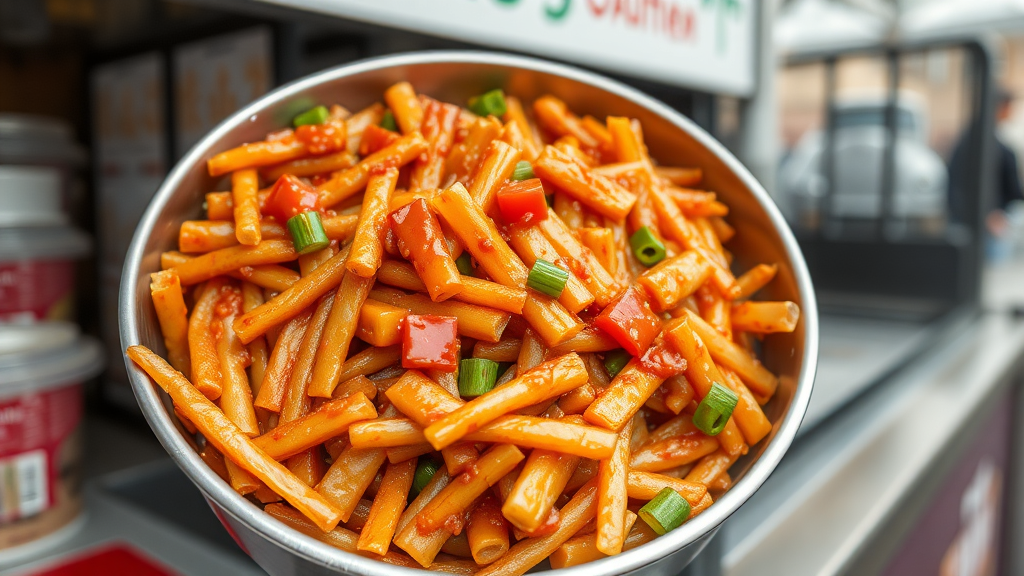

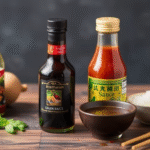
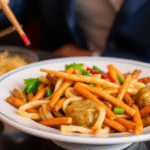
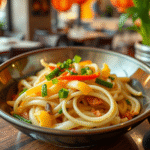
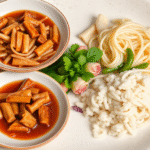
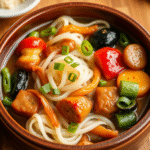
Leave a Reply